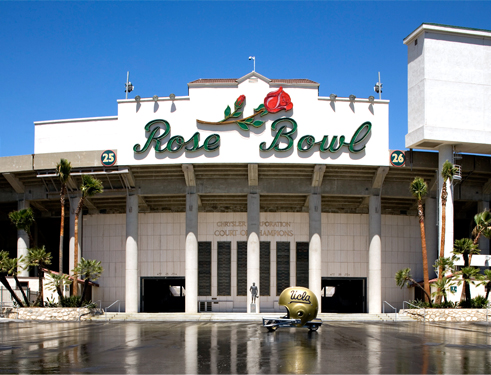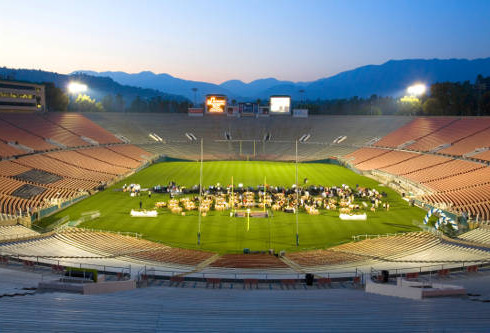Rose Bowl Gets its Bloom Back
The historic stadium is edging closer to re-gaining its status as one of the most important sports facilities in the U.S.
By Alex Girda
Pasadena, Calif.– One of the country’s most iconic stadiums is hot off one of the longest makeovers in recent history. Bernards has carried out a wide variety of improvements and renovations that were meant to usher the Rose Bowl well into the 21st century, while keeping its status as a National Landmark. The contractor was first involved with the renovation process in 2005 when it conducted work on the media center and locker rooms. The main Renovation & Improvements Program was carried out by a joint venture between Bernards and Barton Malow between 2011 and 2016.
Since then, the city of Pasadena has dedicated roughly $183 million to the extensive renovation of the Rose Bowl. Slated to come to an end later this month, the final phase of renovation involves a brand new wireless building that will provide high speed cell phone service to the facility. That operation is being supervised by the Wireless Group, consisting of AT&T, Sprint, Verizon, and T-Mobile.
Carrying 96 years of history, the Rose Bowl was constructed in 1922 using plans designed by architect Myron Hunt. The 90,000-seat facility has hosted the Super Bowl five times between 1977 and 1993, as well as the 1994 Soccer World Cup Final.
The process included building a new brick donor plaza, a renovated Court of Champions, new stadium entry gates, a new signage and advertising system featuring LED advertising panels, new scoreboards, as well as the rebuilt 1940s scoreboard on the stadium’s Southend. The most high-profile element of the Rose Bowl will be the Terry Donahue Pavilion, which consists of 54 luxury suites, 48 loge boxes, 1200 club seats, brand new press boxes, and a new broadcast center. Roughly 318 credentialed members of the press will be seated there, and will be granted access to the all-new game day operations level.
Improvements were also brought to the facility in terms of its utility infrastructure where new loops with upgraded power and communication were added. An additional loop was also added to the underground levels, providing support to systems that provide EnGenius, long-range 5GHZ wireless infrastructure for seating areas that enhance reliable cellular connectivity.
The development team consisted of the joint venture, the City, as well as Parsons, D’Agostino Izzo Quirk Architects and the Rose Bowl Operating Co.
Images courtesy of Bernards









You must be logged in to post a comment.